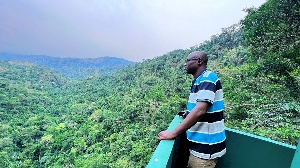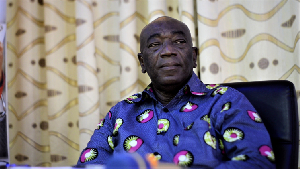Over the past decade, innovation in sustainable forest management has been a key feature in stemming the tide of increasing deforestation across the globe. These innovations have looked at addressing the drivers of deforestation and forest degradation.
More critically, these considered ways to enhance ownership in the management of forest resources through a community-led approach.
The theme for the 2024 International Day of Forests is "Forests and Innovation: New Solutions for a Better World". This theme is fitting as it comes at a time when the world is exploring different mechanisms to help conserve and restore forest resources across the globe.
At COP28, global leaders have demonstrated that they are still very keen on ending deforestation as we witnessed several positive and important steps on forests. These actions range from enhanced commitments to ending deforestation in the tropics, to new financial support for forest action in developing countries.
Countries like Ghana, for example, demonstrated their desire to tackle and address deforestation at COP28 through mechanisms such as the sale of jurisdictional REDD+ carbon credits.
All these desired objectives and actions would require some level of innovation through technology, policy, techniques, and systems. We have seen some great examples of these in recent times; from the use of drones and early warning systems to address forest fires and to the use of regenerative agroforestry techniques.
Innovating despite challenges
In Ghana, we have seen several innovative solutions through the use of technology and policy initiatives. Some of these key innovative solutions are aimed at ensuring sustainable management of forest resources through the use of community-led models like the Community Resource Management Areas (CREMA).
Under the CREMA concept, communities play a central role in the sustainable use of both flora and fauna with different degrees of success. The proposed approach to tree tenure focuses on establishing a clear arrangement of naturally occurring and planted tree species.
This is to help control illegal harvesting while establishing ownership, which presents a great innovative opportunity for forest management. If properly designed, this can help address stakeholder concerns on cost-effectiveness and sustainability. The CREMA concept has been proven and tested by UNDP over the years. Empowering communities to manage their natural resources has contributed to the restoration of hectares of degraded forest landscapes in Ghana.
Simple but effective solutions
One key innovative solution being implemented in Ghana that presents opportunities to enhance livelihoods and better the lives of many is the Modified Taungya System (MTS) approach. The approach in the past was using farmers largely as laborers to plant and nurture timber species while gaining access to degraded forest lands for farming.
Currently, the MTS approach is a full partnership where fringe forest communities have become co-owners of forest plantations. This is a beautiful example of innovative solutions in the forestry sector. UNDP Ghana through its work with the Ghana Cocoa Board under the Environmentally Sustainable Production Practices in Cocoa Landscapes project has explored the use of the MTS model in supporting efforts by the Government of Ghana to restore degraded forest reserves in the Asunafo North district of the Ahafo Region in Ghana.
Through the MTS and a performance-based mechanism, farmers and forest fringe
communities have been supported to establish agroforestry plantations that allow them to earn additional income from the sale of food crops.
The farmers, comprising women, integrate food crops with timber species in their farms, in partnership with the Forestry Commission. This is improving livelihoods and restoring degraded forest areas. The use of performance-based incentives funded by the private sector provides the capital needed by most of the farmers who would have otherwise struggled to set up farms under the scheme.
The success of the MTS approach adopted by UNDP is yet another example that
demonstrates that we do not need grandiose ideas to implement innovative solutions in the management of forest resources. Sometimes all that is needed is a little tweak to an existing idea to better the lives of people, while sustainably managing forest resources. It also demonstrates the private sector’s critical role in the implementation of innovative ideas that are
both sustainable and practical.
As the world marks another International Day of Forests, may we see innovation as an important means of taking practical steps to address challenges in the management of natural resources?
Press Releases of Monday, 25 March 2024
Source: UNDP













